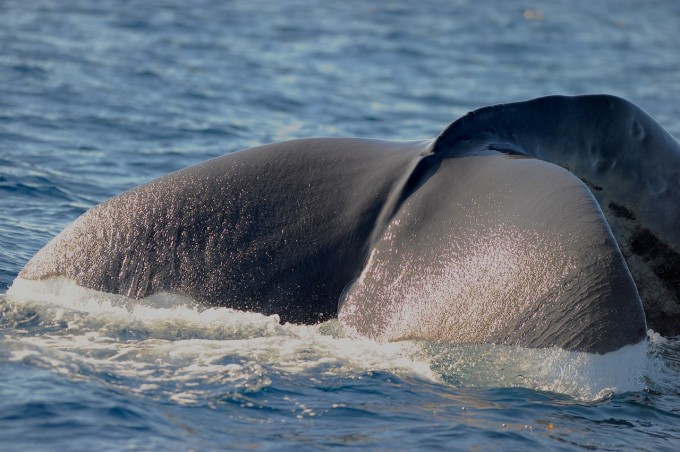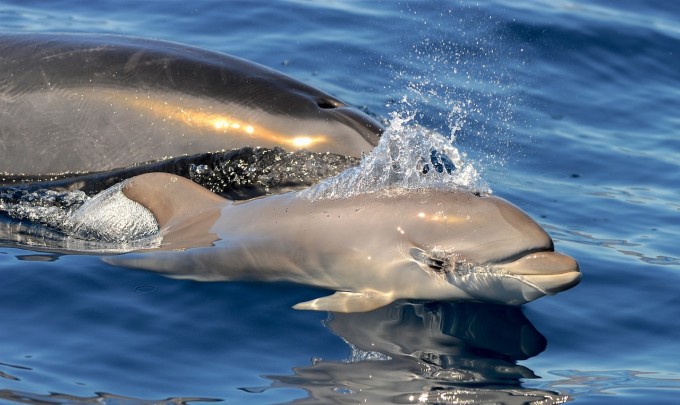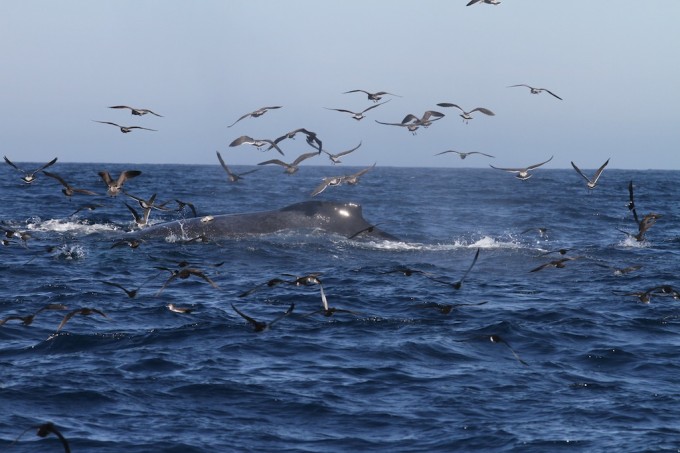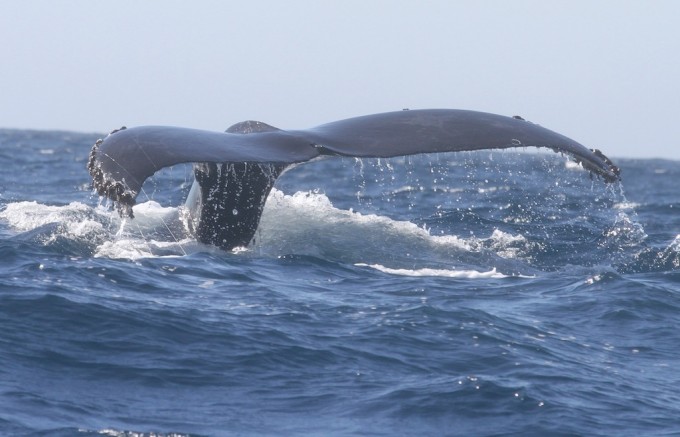For everyone following the SOCAL-BRS from-the-field blog over the past few seasons, welcome back! We just got going on our field project again for the second phase of our field efforts this year and have some new things to report. The weather hasn’t been ideal at the start here although we have had a few workable windows. Additionally, we aim to have a variety of options to work with different priority species given that weather is sometimes difficult offshore, but the very warm and clear surface water off southern California right now is resulting in very few plankton-feeding baleen whales in coastal areas and limiting our options to some degree. But despite these challenges for the first few days we have made some interesting observations and had some successes.
For about the 7th different time in this project over the last three years we had a repeat encounter with our old friend Mango the sperm whale. He is a robust animal who clearly covers large areas in the southern California Bight but returns to a lot of the areas we do. We did not attempt any subsequent tagging efforts with him but did obtain additional photo ID records. Below is a nice short of his broad tail (Photo taken under NMFS permit #14534 by A. Friedlaender).

We have also had quite a few sightings of coastal and offshore bottlenose dolphins, including this nice shot of a mom-calf (Photo credit: A. Friedlaender), but given our lack of success getting suction cup acoustic tags to stay on this species we have not attempted subsequent tagging or CEEs.

Yesterday we found an interesting mixed-species feeding aggregation of birds, humpback whales, sea lions, and dolphins, each of which (including the humpback whales actually) were focused on large schools of small fish. We focused on the humpback whales, which are important for this project because of their endangered species status and the fact that their responses to these kinds of sounds are almost entirely unknown.

We observed this feeding aggregation (see above- photo credit: A. Friedlaender) for several hours before attaching suction cup acoustic tags to two of the animals and continuing to monitor them and other animals in the area. With three boats monitoring the group in an area sufficiently offshore, we conducted a controlled exposure experiment within our specified safety and experimental criteria. As has happened several times in our project, an interested sea lion came over to check out our sound source during the transmissions and despite it seeming more interested than annoyed or impacted by it, we diligently shut the sound source down as specified in our research permits; the data were still important and useful as this was within just a few minutes of the specified period. One of the tags on the humpbacks remained on the animal a full 24 hours which will provide a wealth of information on any potential responses and behavior later yesterday and today; the animal was relocated fairly nearby and monitored for several hours in normal behavioral modes with the same other humpbacks today until we recovered the tag.

The offshore weather forecast for the next few days off southern California looks quite favorable so we will be heading back offshore tomorrow so do realize that we will be without internet access for this period. We will provide a detailed update on our status and progress as soon as possible. Thanks so much for all the encouragement, interest, support, and feedback through the blog and by emails on our efforts to better understand the basic biology of marine mammals in southern California and their response to sounds. If you missed it on the blog while we were between research phases, please do note that we recently had a paper on our experimental methods published in the Marine Technology Society Journal
<please see: https://sea-inc.net/2012/09/16/socal-brs-paper-published-in-marine-technology-society-journal/>
